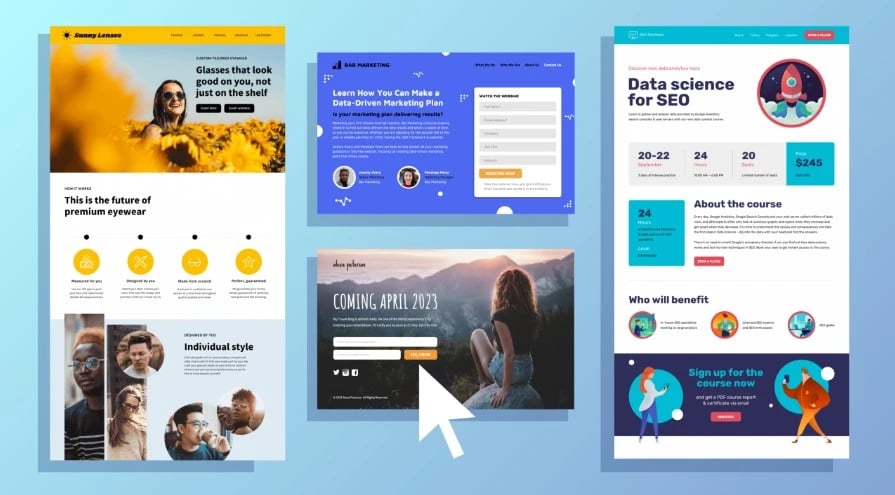
Many users today access the web primarily through mobile devices, which means your website must be optimized for this experience to attract and retain customers. An appealing, functional mobile website is important for your business in converting leads and enhancing your brand’s social media presence. In this post, you’ll discover easy tips to elevate your site’s design and usability on smartphones and tablets, ensuring a seamless experience for your audience.
Understanding Mobile-First Design
While it might seem tempting to develop your website primarily for desktop users, the undeniable shift towards mobile usage demands a mobile-first approach in your design. This modern perspective ensures that your site caters to the majority of users who are browsing from their smartphones or tablets. With nearly 84% of the global population owning a mobile device, and over 54% of all web traffic generated through these devices, prioritizing mobile optimization is not just strategic; it’s vital for the success of your business. By implementing a mobile-first design, you can significantly enhance the user experience, keeping users engaged and reducing bounce rates, ultimately leading to higher conversions and leads.
Importance of Mobile Optimization
The importance of optimizing your website for mobile devices cannot be overstated. Many customers today rely exclusively on their smartphones for internet access. If your website isn’t optimized for these devices, you’re not only risking losing a large audience but also possibly alienating your loyal customers. A mobile-friendly design can improve your site’s loading speed and navigation, directly affecting user satisfaction. In fact, if visitors encounter a poorly designed mobile site, they are likely to seek out your competitors instead, diminishing your chances of turning those visitors into leads.
Key Differences Between Responsive and Adaptive Design
Designing a mobile-friendly website requires an understanding of how responsive and adaptive design differ. Responsive design allows your website to automatically adjust its layout and elements based on the size of the screen being used. This means that no matter whether a visitor is using a smartphone, tablet, or desktop, they’ll have a seamless experience. In contrast, adaptive design creates fixed layouts for multiple screen sizes, serving different versions of your website depending on the device. While both strategies aim to optimize user experience, responsive design is typically preferred today due to its flexibility and efficiency.
Importance of grasping these differences lies in ensuring that your website effectively meets the needs of your audience. As a business in today’s digital landscape, you must prioritize a responsive design that adapts to the evolving needs of your customers. By doing so, you enhance not only their experience but also your brand’s reputation on digital platforms. Ensuring your site functions flawlessly across devices can establish your brand as a lead competitor in the market, ultimately increasing customer satisfaction and engagement.
Analyzing Your Audience
Some of the most effective steps you can take to ensure your website looks great on mobile devices involve understanding the needs and behaviors of your audience. In today’s digital landscape, where over 54% of all web traffic comes from mobile devices, it’s crucial to have a clear picture of who your visitors are and how they interact with your site. By analyzing your audience, you can make targeted adjustments that enhance user experience and drive conversions, ultimately benefiting your business and funneling more leads into your sales pipeline.
Utilizing Analytics to Gauge Mobile Traffic
One of the first places to start is by stepping into your website’s analytics. Tools like Google Analytics can provide invaluable insights into how many visitors access your site via mobile devices versus desktop. You might discover patterns indicating a higher bounce rate among mobile users or lower engagement metrics, which can signal that your site isn’t performing optimally on smaller screens. By identifying these trends, you can prioritize which areas of your website require immediate attention to improve overall user experience.
Furthermore, segmenting your data by device can help you understand the specific behaviors of mobile users compared to desktop users. This granularity enables you to tailor your design and content strategy directly to the preferences of your audience, ensuring that you meet their needs effectively. As you initiate changes based on these findings, keep an eye on new data to assess the impact of your modifications, adjusting your approach as necessary.
Gathering Customer Feedback for Insights
Analyzing your audience also means actively seeking out customer feedback. Engaging with your users directly can offer rich, qualitative insights that analytics alone may not reveal. You can conduct surveys, encourage reviews, or simply reach out to your customers via social media to ask about their experience on your website. Understanding their frustrations or preferences will highlight areas for improvement and can significantly influence your design brand.
Traffic dynamics change regularly, and being proactive in gathering feedback ensures that you stay aligned with your customer’s expectations. When your customers feel heard, they are more likely to become repeat visitors, contributing to a loyal customer base that motivates others through word-of-mouth. Make it a priority to incorporate this feedback into your mobile optimization strategies, ultimately leading to an effective and appealing website that meets the needs of your audience.
Simplifying Your Website Layout

One of the most effective ways to enhance the mobile experience for your customers is by simplifying your website layout. A streamlined, uncluttered design ensures that visitors can navigate your site easily, which is crucial given that over 54% of all web traffic now comes from mobile devices. Simplifying your layout not only caters to your audience’s needs but also aids in converting those valuable leads into loyal customers.
Reducing Clutter for Better Usability
One of the key aspects of a mobile-friendly website is the reduction of visual clutter. By minimizing the number of elements on the screen, you can improve usability significantly. This means removing unnecessary plugins, excessive text, and distracting graphics that may overwhelm users on smaller screens. Maintaining a clean interface allows your customers to focus on what truly matters, leading to a better overall experience and increasing the likelihood of them staying on your site longer.
Prioritizing Key Elements on Mobile Screens
A vital part of simplifying your website layout is understanding how to prioritize key elements on mobile screens. Since space is limited on mobile devices, it’s crucial to make the most important information readily accessible. This could include your business’s value proposition, call-to-action buttons, and relevant product images, all placed prominently for easy viewing.
With your design shortcomings pointed out through customer feedback and analytics, you can identify the elements that require emphasis. Tailoring your mobile site to highlight these key features not only enhances user experience but also influences your success on social media and in lead generation. By ensuring your vital elements are easily accessible, potential customers are more likely to engage with your brand, ultimately leading to higher conversion rates. At Mister Nguyen Agency, we understand the significance of an optimized design brand that effectively captures and serves your audience’s needs.
Enhancing Loading Speed

Despite the extensive content available on the web, users are becoming increasingly impatient when it comes to loading times. In fact, studies show that 53% of mobile users will abandon a site that takes longer than three seconds to load. For your business, this means that each second counts when it comes to converting leads and keeping your customers engaged. If your website lags, potential customers are more likely to bounce to a competitor’s site, which can ultimately impact your brand’s reputation and bottom line.
Importance of Fast Loading Times
An optimized loading speed is crucial for your website’s success, especially in a mobile-first world. With over 54% of all web traffic originating from mobile devices, you must ensure that your site can accommodate this influx without compromising user experience. A fast-loading website not only improves visitor retention but also enhances your search engine rankings. Major search engines like Google prioritize sites with swift load times, meaning that a slow website can hurt your visibility and prevent potential customers from discovering your business.
Techniques for Optimizing Site Speed
On the technical side, there are several effective ways to optimize your website’s speed. First, you can compress images without losing quality through various image optimization tools. Additionally, utilizing browser caching allows frequently accessed files to be stored locally on users’ devices, which decreases loading times for returning visitors. Minifying your CSS and JavaScript files can also significantly reduce the amount of code that needs to be processed, further speeding up load times.
Times have changed, and so have user expectations. As you strive to maintain a professional online presence through Mister Nguyen Agency, implementing these speed optimization techniques not only satisfies your customers but also amplifies your leads. By prioritizing site speed, you demonstrate a commitment to providing exceptional user experiences. Combine this with a solid social media strategy and responsive design, and your business will stand out among the competition.
Navigational Improvements
Unlike traditional desktop experiences, where you have ample space to layout your content, mobile devices come with limited screen real estate. This makes it imperative for you to optimize your website navigation. Poor or cluttered navigation can frustrate users and lead to higher bounce rates. With over 54% of all web traffic originating from mobile devices, as a business, you can’t afford to miss out on leads due to inefficient navigation. Implementing clear and concise navigational improvements will keep your customers engaged and reduce the likelihood of them seeking alternatives.
Designing a User-Friendly Menu
On mobile devices, simplicity is key. Your menu should be straightforward, giving users quick access to imperative sections of your site. Consider using a “hamburger” icon that expands into a dropdown menu. This provides a clean interface while allowing users to explore your content effortlessly. Avoid overcrowding your menu with too many options; instead, categorize your information logically. Prioritize the pages that will drive conversions and focus on your main offerings, ensuring that your customers can find what they need in just a few taps.
Implementing Effective Call-to-Actions
The effectiveness of your call-to-action (CTA) buttons can significantly influence user engagement and conversions on your mobile website. Make sure your CTAs are not only visually distinct but also strategically placed throughout your site. The goal is to guide your customers towards taking an action, such as signing up for a newsletter, requesting a quote, or making a purchase. A well-placed CTA can transform a casual visitor into a lead, significantly impacting your business’s success.
It’s vital that your CTAs are clear, concise, and compelling. Use action-oriented language like “Get Started” or “Sign Up Today” to encourage immediate responses from your users. Also, ensure that the buttons are large enough to be easily tapped on a mobile screen without the need for precision. According to a study, businesses that optimize their CTAs for mobile see a considerable boost in conversion rates. At Mister Nguyen Agency, we understand the critical role that CTAs play in engaging customers and driving effective interactions on your site.
Refining Visuals for Mobile
For any business striving to enhance its online presence, particularly through mobile platforms, refining visuals is crucial. You want your website to be visually appealing, engaging, and easy to navigate on smaller screens. When users visit your site, their first impression is often shaped by the aesthetics of your visuals. If your website isn’t visually engaging on mobile devices, you risk losing potential customers—especially given that over 54% of web traffic now comes from mobile users. Engaging and well-optimized visuals can help retain visitors and convert them into leads for your business.
Choosing Mobile-Friendly Images
With countless devices displaying various screen sizes, it’s vital to choose images that are responsive and load quickly. Before selecting images for your website, consider their size and quality. High-resolution images not only capture attention but can also be resized without losing clarity, ensuring they look great on all devices. On the other hand, large image files can slow down your website’s loading time, negatively impacting user experience. Aim to compress images without sacrificing quality, which will help your website perform efficiently while keeping potential leads engaged.
The Role of Aesthetics in User Experience
One of the key elements of a successful mobile website is its aesthetic appeal. A visually pleasing design can significantly influence how customers perceive your business; studies have shown that users often make judgments about a brand’s credibility within seconds of visiting a website. Therefore, investing in sophisticated design can help assure your customers that you prioritize quality, leading them to spend more time on your site and explore your offerings.
Visuals play a critical role in how users interact with your content. They draw the eye, guide attention to important information, and can simplify complex ideas. By strategically incorporating visuals that are not just attractive but also relevant, you enhance the overall user experience. A strong design aesthetic helps create a seamless interaction that fosters trust and encourages conversion, ultimately leading to increased business success for you as a brand. When you invest in thoughtful design, such as the services offered by Mister Nguyen Agency, you not only enhance your website’s appearance but also strengthen your brand’s connection with customers across all platforms, including social media.
Testing and Iterating
Your journey toward a mobile-optimized website doesn’t end with the initial design and implementation; it’s crucial to continuously test and iterate to ensure a seamless experience for your users. Regular testing allows you to identify potential issues that may hinder user interaction or engagement. Implementing feedback mechanisms, such as customer surveys or analytics, can provide meaningful insights into how your audience interacts with your site.
Importance of Mobile Testing
One of the major takeaways from the rapidly increasing mobile traffic is that without thorough testing on mobile devices, your website may frustrate users, leading to higher bounce rates and lost opportunities. With over 54% of all web traffic coming from mobile devices, neglecting mobile testing could mean you’re missing out on a vast number of potential customers. Testing allows you to assess how your site performs on various devices and browsers, helping you identify shortcomings that must be addressed to enhance user experience.
Additionally, mobile testing can help you fine-tune your design elements for different screen sizes, ensuring that your content remains accessible and engaging. A well-optimized mobile site not only captures the attention of your audience but also drives conversions. When users have a seamless experience, they are more likely to stay on your site, explore your offerings, and ultimately convert into paying customers.
Tools for Mobile Optimization Testing
An vital part of making your website mobile-friendly is utilizing the right tools for mobile optimization testing. Various tools can help you evaluate your site’s performance on mobile devices, ranging from functionality checks to load time assessments. Google’s Mobile-Friendly Test and PageSpeed Insights are notable options that provide valuable feedback on how effectively your website performs on mobile devices. These tools assess critical factors such as loading speeds, usability, and responsiveness, allowing you to make informed decisions to improve your design.
It’s important to continuously monitor your site using these tools to stay ahead of potential issues. Doing so not only enhances your website’s user experience but also keeps your business competitive in the digital landscape. By regularly utilizing mobile optimization testing tools, you can ensure that your site remains appealing and functional for your audience, fostering a more productive relationship with your customers and increasing your overall leads. Recall, the effort you put into refining your mobile site is a direct reflection of your commitment to providing quality services and engaging with your audience through reliability and excellence.
Conclusion
Hence, optimizing your website for mobile devices is not just an option; it’s a necessity in today’s digital landscape. As mobile traffic continues to dominate internet usage, ensuring that your business’s website is visually appealing and easy to navigate on smartphones and tablets will help you attract and retain customers. By implementing strategies such as simplifying your design, refining your aesthetics, and prioritizing speed, you create a seamless user experience that encourages visitors to stay longer and convert into valuable leads. Mister Nguyen Agency is equipped to help you achieve this goal, enhancing your brand’s presence across social media and digital platforms.
Note, your website acts as a digital storefront that reflects your brand’s commitment to quality and user experience. If you prioritize mobile optimization, you’re not only catering to the needs of your customers but also positioning your business for sustained growth and success. By investing in mobile-friendly design, you send a clear message that you value the convenience and satisfaction of your users. Let Mister Nguyen Agency guide you through this process and watch how effective mobile design can elevate your business to new heights.











